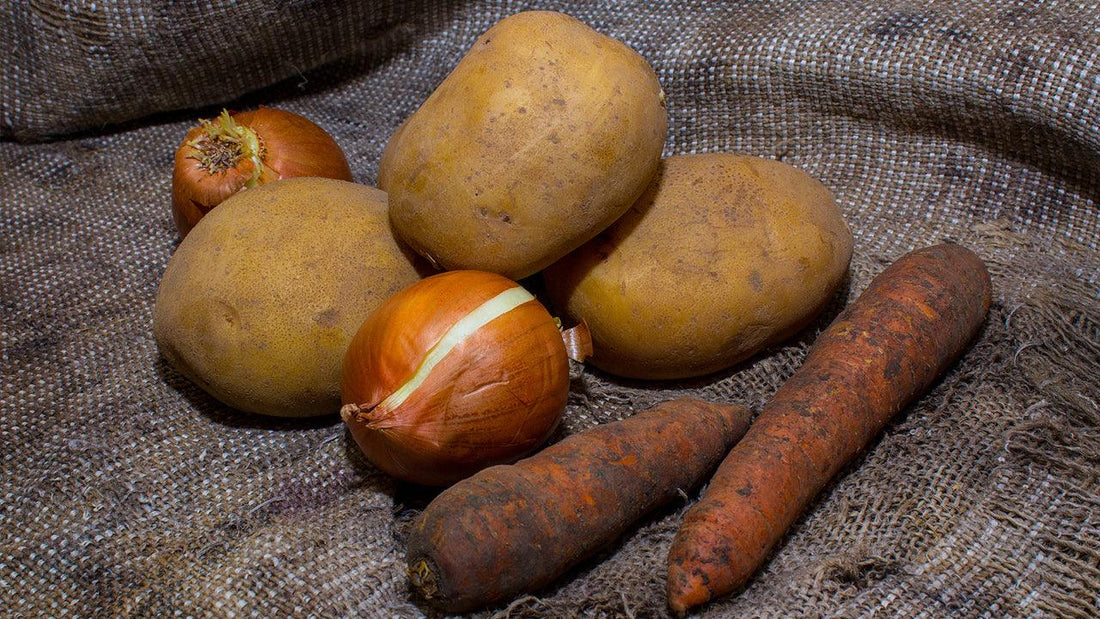Building and Using a Root Cellar: An Energy-Free Way to Preserve Your Harvest
A root cellar is a time-tested, energy-efficient solution for preserving your fruits, vegetables, and other foods long-term. Before modern refrigeration, root cellars were essential for keeping families fed through the winter. For today’s gardeners and anyone pursuing self-sufficiency, they offer a low-cost and sustainable method to store fresh produce, rootstock, and bulbs. With a well-designed root cellar, you can enjoy the flavors of your garden throughout the year without relying on energy-consuming appliances.
Why Choose a Root Cellar?
Root cellars provide a natural way to preserve food without electricity. Unlike freezing or canning, which require ongoing energy input, a root cellar uses stable underground temperatures to keep food cool, dark, and fresh. They are ideal for gardeners with large harvests or anyone who buys seasonal produce in bulk.
Benefits of a root cellar include:
- Energy Efficiency: No electricity required.
- Cost Savings: Lower food storage costs.
- Longevity: Properly stored produce can last for months.
- Self-Sufficiency: Reduces reliance on grocery stores and modern preservation methods.
What Foods Can You Store in a Root Cellar?
Root cellars are perfect for storing a wide range of foods, including:
- Root Vegetables: Potatoes, carrots, beets, turnips, and parsnips.
- Other Vegetables: Cabbage, onions, garlic, and winter squash.
- Fruits: Apples and pears.
-
Additional Items: Canned goods, cured meats, aged cheeses, and homemade beverages like beer or wine.

Designing Your Root Cellar
Designing a root cellar requires careful planning to ensure your food stays fresh and safe. The key principles are maintaining cool, stable temperatures and proper humidity levels.
-
Choose the Right Location:
- Underground spaces, such as basements or cellars, are ideal.
- Ensure the area is free from flooding and pests.
-
Ventilation:
- Good airflow prevents mold growth and keeps temperatures consistent.
- Install vents or small windows for proper air circulation.
-
Temperature Zones:
- Heat rises, so use shelving to create different temperature zones.
- Store cooler items like root vegetables near the ground and warmer items higher up.
-
Humidity Control:
- Maintain a humidity level of 85–95% for most vegetables.
- Use perforated tubs for vegetables that need high humidity. For drier produce, use sealed containers with moisture absorbers like rice.
-
Separate Ethylene Producers:
- Fruits like apples release ethylene gas, which can cause nearby vegetables to spoil.
- Store ethylene-producing items near vents or in sealed containers.
Building a Root Cellar
You can adapt an existing space, such as a basement or garage, into a root cellar, or you can build one from scratch.
Adapted Root Cellars:
- Basements with dirt floors work well for maintaining consistent temperatures and humidity.
- Insulate walls and floors if necessary to keep temperatures stable.
Outdoor Root Cellars:
- Build an underground storage space using wood, concrete, or other materials.
- Insulate the structure and include a ventilation system to prevent freezing in winter and overheating in summer.

Preparing Your Harvest for Storage
Proper preparation is critical to maximize the shelf life of your produce.
-
Plan Ahead:
- Choose varieties that are recommended for long-term storage when planting.
-
Cure Certain Vegetables:
- Vegetables like potatoes, onions, and winter squash benefit from curing before storage. This process helps harden their skins and prevent rot.
-
Avoid Washing:
- Do not wash produce before storing. Soil contains natural disease-fighting properties.
-
Inspect for Damage:
- Only store undamaged, disease-free produce. Discard or set aside bruised or cut items for immediate use.
-
Monitor Regularly:
- Check your stored produce every few weeks for signs of rot or spoilage. Remove any deteriorating items to prevent them from affecting the rest.
Tips for Maximizing Shelf Life
- Keep Produce Cool and Dark: Exposure to light can cause sprouting in potatoes and other vegetables.
- Use Appropriate Containers: Store vegetables in perforated bags or tubs for humidity control.
- Rotate Stock: Always use older produce first to prevent waste.
Root Cellar Maintenance
Maintaining your root cellar ensures its longevity and effectiveness:
- Clean Regularly: Remove dirt, debris, and old produce after each season.
- Inspect for Pests: Seal cracks and gaps to keep out rodents and insects.
- Monitor Temperature and Humidity: Use a thermometer and hygrometer to keep conditions stable.
A Sustainable Solution
Root cellars are more than just storage spaces—they are a step toward sustainable living. By reducing food waste, lowering energy consumption, and extending the life of your harvest, a root cellar is a practical investment for any gardener or homesteader.
Final Thoughts
A root cellar is a valuable tool for preserving the fruits of your labor. Whether you’re storing apples for winter pies, root vegetables for hearty stews, or homemade canned goods, a root cellar keeps your harvest fresh, flavorful, and accessible year-round. Start planning your root cellar today to enjoy the many benefits of this time-honored preservation method.



